The Supreme Court May Be Lost for a Generation
John Robert is the newest swing vote, but he's still a conservative. And if Trump is reelected, the GOP will likely get a sixth justice.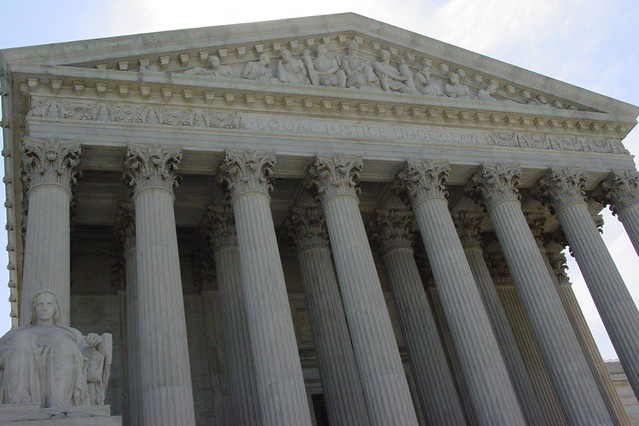 Ken Chan / Flickr
Ken Chan / Flickr
This piece originally appeared on The Progressive.
“There is hardly any political question in the United States that sooner or later does not turn into a judicial question.” — Alexis de Tocqueville, Democracy in America
The U.S. Supreme Court’s 2018-19 term made it clearer than ever that Chief Justice John Roberts rules the roost behind the high tribunal’s regal red curtains. Roberts has replaced the retired Anthony Kennedy as the panel’s most critical swing vote, and he is making full use of the power that comes with that pivotal role.
But make no mistake: Roberts is no liberal. He may be more cautious and less dogmatic than some of his brethren, but each and every Republican-appointed Justice—from Roberts to Clarence Thomas, Samuel Alito, Neil Gorsuch, and Brett Kavanaugh—is staunchly conservative. And that’s bad news for progressives.
“With the confirmation of Kavanaugh last October, we now have five current or former members of the Federalist Society on the Supreme Court,” Michael Avery, professor emeritus of law at Suffolk University Law School in Boston, says in an interview. “If Trump is reelected, there probably will be a sixth at some point.”
Avery, a former president of the National Lawyers Guild, is the co-author of the definitive study The Federalist Society: How the Conservatives Took the Law Back from Liberals, published in 2013. The book charts the group’s rise from a law-school debate club at Yale and the University of Chicago in the early 1980s to a nationwide network of 70,000 economic, social, and Christian conservatives, along with rightwing libertarians, scattered in lawyers’ chapters in eighty cities, and with student affiliates in nearly every major law school.
Federalist Society members attend conferences, seminars, and meetings, and participate in “practice groups” where they learn the contemporary right’s gospel on civil rights, labor, the First Amendment, and other important areas of substantive law.
No longer a shoestring operation, the society’s 2016 budget exceeded $26 million, raised in large part from contributions by rightwing philanthropists like the Koch brothers and other deep-pockets like the Mercer, Scaife, and Lynde and Harry Bradley Foundations.
Though Roberts claims he can’t recall belonging to the Federalist Society, the group listed him as a member in its 1997-98 directory. The Court’s other Republican appointees remain active participants in society events and conventions. Alito, Thomas, Gorsuch, and Kavanaugh all attended the organization’s annual black-tie gala in November 2018 at the Main Hall of Union Station in Washington, D.C. The event was held in honor of the late Antonin Scalia, who served as one of the society’s first academic mentors during his teaching days at the University of Chicago.
With the exception of Thomas, the Federalist Society has had a hand in selecting all of the Court’s GOP-appointed conservatives. According to The Washington Post, in 2005 and 2006, the society’s executive vice president, Leonard Leo, a devout Catholic and outspoken critic of abortion rights, raised about $15 million from his well-heeled patrons to pay for ads, telemarketing, and the mobilization of astroturf advocacy groups to support the nominations of Roberts and Alito.
Leo took a formal leave of absence to help Trump secure the confirmation of both Gorsuch and Kavanaugh.
It’s not just party affiliation and the Federalist Society that link Roberts and his Republican colleagues. They are also united by judicial philosophy. Each, to varying degrees, embraces “originalism,” the legal theory that posits the Constitution should be interpreted according to its meaning for the Founding Fathers, rather than read as a “living document” that can and should accommodate contemporary values, social needs, and evolving traditions.
Any doubts about Roberts’s influence or the ideological orientation of the Court’s conservative wing were laid to rest on June 27, the last open session of the just-concluded term, when the two most highly anticipated and sharply contested decisions of the year were announced: the first, Rucho v. Common Cause, dealing with partisan “gerrymandering,” and the second, Department of Commerce v. New York, concerning the U.S. Census. The justices divided 5-4 in both cases, with Roberts writing the majority opinion in each.
Although the legal issues raised in each case are distinct, they are related, as states with more than one Congressional district are required to redesign their voting districts every ten years in accordance with new Census data.
Activists at the Supreme Court opposed to partisan gerrymandering hold up representations of Congressional districts from North Carolina, left, and Maryland, right, as justices hear arguments about redistricting in Rucho v. Common Cause.
Because redistricting is basic to the functioning of democracy, it often sparks heated litigation. Unfortunately, the Rucho ruling dealt democracy a body blow, as the Court held that partisan gerrymandering, no matter how extreme, presents a nonjusticiable “political question” beyond the jurisdiction of federal judges.
As Roberts noted in his opinion, gerrymandering has a long history. The term itself is a portmanteau coined after the salamander-like voting districts created by Massachusetts Governor Elbridge Gerry in 1812 to give an advantage to his Democratic-Republican Party. The term is used today to refer to abusive forms of redistricting aimed at entrenching a particular party in power.
Political gerrymandering is especially acute in the thirty states currently controlled by Republican legislatures. In the 2018 elections, Republicans won about 50 percent of the popular vote for U.S. House Representatives in North Carolina, but were accorded 70 percent of the state’s Congressional delegation due to how the maps were drawn. But both parties have historically been guilty of the practice.
In Rucho, the Court consolidated two lawsuits initiated, respectively, by Democrats in North Carolina and Republicans in Maryland. Each alleged their state’s redistricting plan unconstitutionally discriminated against their own party. Federal district judges in both cases agreed, but their rulings were appealed to the Supreme Court.
Because of the bipartisan nature of the challenges, there was some hope following oral arguments in March that the Supreme Court would uphold the challenges based on longstanding precedents. In Baker v. Carr (1962), the Court outlawed population-based gerrymandering, establishing the doctrine of “one person, one vote.” And by the mid-1980s, the Court had forbidden “racial gerrymandering”—the designing of districts to dilute the voting power of minorities.
But the Court has never overturned an instance of purely partisan gerrymandering. And, with the Rucho ruling, it appears the practice is here to stay.
Roberts argued that some degree of partisan gerrymandering is inherent in any electoral system, and there is no objective standard by which judges can distinguish permissible from improper forms of partisan gerrymandering. He also invoked originalism to bolster his opinion, writing, “Partisan gerrymandering is nothing new. Nor is frustration with it. The practice was known in the Colonies prior to Independence, and the Framers were familiar with it at the time of the drafting and ratification of the Constitution.”
The Framers, he continued, left the issue to be resolved by the states and, if need be, by Congress. But, he admonished, for judges “[t]o hold that legislators cannot take partisan interests into account when drawing district lines would essentially countermand the Framers’ decision to entrust districting to political entities.”
Roberts’s ruling will likely keep contested Republican gerrymanders in place for the 2020 elections, not only in North Carolina, but in Ohio, Michigan, Wisconsin, and elsewhere.
In dissent, Associate Justice Elena Kagan, speaking for herself and the Court’s liberals, rebuked the majority for endorsing partisan gerrymanders that have “debased and dishonored our democracy, turning upside-down the core American idea that all governmental power derives from the people . . . . For the first time ever, this Court refuses to remedy a Constitutional violation because it thinks the task beyond judicial capabilities.”
In the census question case, the majority Roberts cobbled together was far more fractured, with the conservatives joining some sections and the panel’s liberals—Kagan and Associate Justices Stephen Breyer, Ruth Bader Ginsburg, and Sonia Sotomayor—endorsing other portions.
The central issue was whether Commerce Secretary Wilbur Ross acted lawfully when he directed the Census Bureau, which his department oversees, to add a citizenship question to the basic “short-form” that will be sent early next year to all U.S. residents.
The Census, which the Constitution requires be conducted every ten years, is used to set the number of votes each state is accorded in the Electoral College and the number of seats allocated to each state in the House of Representatives. It has not included a question regarding citizenship since 1950. Citizenship data is available to the government from other sources, such as the American Community Survey, which the Census Bureau sends out to 3.5 million households each year, and Social Security Administration and state voting records.
Reviving a citizenship question in an era of heightened immigration law enforcement, one study found, would lead to an undercount of more than six million Hispanics, about 12 percent of the country’s Hispanic population. This undercount could potentially dilute the political power of blue states like California and New York that have large numbers of immigrants.
Appearing before the Ways and Means Committee in March 2018, Ross testified under oath that he revived the citizenship question at the request of the Department of Justice, which, he said, wanted more precise citizenship data to better enforce the Voting Rights Act.
Ross’s directive spurred federal lawsuits in New York, California, and Maryland. In each case, federal district court judges struck down the citizenship question, rejecting Ross’s stated justification. (The Trump Administration has yet to file a single Voting Rights Act enforcement case.)
In fact, evidence discovered during the lawsuits proved that the idea for reinstating the citizenship question came not from the Department of Justice but from discussions between Ross, former White House Chief Strategist Steve Bannon, and former Kansas Secretary of State Kris Kobach, both of whom have long histories of anti-immigrant vitriol. (As head of Trump’s since-abandoned Presidential Advisory Commission on Election Integrity, Kobach propagated the myth that millions of undocumented people had voted in 2016.) The Department of Justice endorsed the citizenship question only after Ross asked it to.
After the Supreme Court heard oral arguments in April, documents released by the daughter of Thomas Hofeller, a Republican redistricting strategist who died in 2018, provided shocking new evidence of the administration’s racial animus. They showed that in early 2017, Hofeller pushed Trump officials to reinstate the citizenship question to give “white Republicans” a redistricting advantage.
Despite these disclosures, Roberts and his conservative bench-mates held that there was nothing illegal in resurrecting the citizenship question for the upcoming Census, even if it depresses Hispanic responses. But Roberts, to his credit, joined with the Court’s liberals to temporarily block the question, saying its rationale “seems to have been contrived.” He gave the government another chance to justify its actions.
Trump, predictably, condemned the Court’s decision as “ridiculous” in an angry tweet on the day the decision was announced. He later called the ruling a “very sad time for America,” and threatened to find a way to sidestep it, but ultimately ended up backing down.
Appointed Chief Justice by President George W. Bush in 2005, Roberts has long been at the center of speculation about the Court’s future. “Roberts cares a lot about the Supreme Court as an institution and his own historical legacy,” says professor Eric Segall, who teaches constitutional law at Georgia State University. “At times, I think he might feel that he’s the only thing that prevents the Court from losing all legitimacy in the eyes of the public.”
Last November, after Trump blasted a federal judge as an “Obama judge” for overturning his new restrictions on political asylum, Roberts issued a biting reply: “We do not have Obama judges or Trump judges, Bush judges or Clinton judges. What we have is an extraordinary group of dedicated judges doing their level best [for] those appearing before them. The independent judiciary is something we should all be thankful for.”
But while such words are welcome, Roberts remains “deeply conservative,” Segall says. “Apart from his opinion upholding the Affordable Care Act’s individual mandate in 2012, he rarely votes with the liberals in the most critical 5-4 cases. People tend to forget that in the same case, he also struck down the ACA’s mandatory expansion of Medicaid.”
Adam Feldman, who holds a law degree as well as a doctorate in political science from the University of Southern California, spends his days combing through the Supreme Court’s cases, crunching the numbers and discerning the trends behind the Court’s decisions for his Empirical Scotus website.
“There are in fact some glaring differences in the voting patterns of the Justices that align with the party of the President who appointed them,” Feldman says. His research shows that during the Court’s 2017-18 term, Kennedy’s last stint on the Court, the Justices voted along party lines at a 73 percent rate.
Roberts’s 5-4 majority opinions also include Shelby County v. Holder (2013), regarded by Segall as “one of the Court’s worst” recent decisions for striking down a key provision of the Voting Rights Act. In June 2018, Roberts swung sharply to the right again, penning the Court’s 5-4 opinion that upheld Trump’s Muslim travel ban.
Segall’s 2018 book, Originalism as Faith, traces the evolution of the concept as a tool for interpreting the Constitution. Initially, as popularized by Reagan-era Attorney General Ed Meese and the late failed-Supreme Court nominee Robert Bork, the doctrine asserted that the flowery but ambiguous terms in the Constitution and the Bill of Rights like “freedom,” “liberty,” “due process,” and “cruel and unusual punishments” should be understood according to the “original intent” of the Founding Fathers.
The current version—call it Originalism 2.0—was popularized by Scalia and others, who recognized the difficulty of ascertaining the Founders’ actual intent. They chose instead to focus on the original “public meaning” of Constitutional provisions, as revealed in the recorded debates from the Constitutional Convention as well as dictionaries from that time.
Proponents of both versions insist their approach restrains judicial discretion, limits subjectivity, and prevents judges from behaving like legislators, as Scalia alleged in his blistering dissent in Obergefell v. Hodges (2015), which recognized a Constitutional right to same-sex marriage. Roberts wrote a separate dissent.
Kennedy’s majority opinion in Obergefell affirmed the “living Constitutionalist” view, declaring: “The nature of injustice is that we may not always see it in our own times. The generations that wrote and ratified the Bill of Rights and the Fourteenth Amendment did not presume to know the extent of freedom in all of its dimensions, and so they entrusted to future generations a charter protecting the right of all persons to enjoy liberty as we learn its meaning.”
The originalist position, Segall says, is “so dumb it’s hard to respond.” There is “no grand theory or intellectual construct” that can determine the outcome of all Supreme Court cases. Yes, history and text matter, but in the end “originalism is just another result-oriented approach dressed up as objectivity.”
For instance, Segall notes, “There is nothing persuasively originalist about the Court’s recent decisions on campaign finance or affirmative action.” And so the decisions rendered ultimately reflected the Justices’ life experiences, personal values, and political beliefs. He says it’s no wonder that the opinions of Clarence Thomas—considered by many to be the Court’s most ardent originalist—“are remarkably similar to the platform of the Republican Party.”
Not all progressives reject originalism as an unworkable scam. The lawyers at the scrappy Constitutional Accountability Center, based in Washington, D.C., actually used it to secure a rare win for workers in a case decided earlier this year.
“Progressives too often concede the founding of the Constitution to conservatives,” says Brianne Gorod, the center’s chief counsel. “That’s a mistake. We emphasize not only the text and history of the Constitution, but also the values it expresses, particularly those embedded in the Reconstruction-era amendments, which are both democratic and egalitarian.”
The case concerned the definition of an “employee” under the 1925 Federal Arbitration Act, and Gorod’s brief urged the Justices to consult dictionaries and other texts from the 1920s to find that a group of truck drivers were employees rather than independent contractors, and were thus entitled to file a class-action lawsuit over wage and hour disputes. The Justices agreed and, in a unanimous ruling written by Gorsuch, held that the drivers were not required to file individual arbitration claims.
The Court’s conservatives also occasionally broke ranks to join with liberals in other cases this term. In Apple Inc. v. Pepper, for example, Kavanaugh drafted the 5-4 majority opinion, joined by Ginsburg, Breyer, Sotomayor, and Kagan, ruling that iPhone purchasers can sue Apple for allegedly monopolizing the retail market for the sale of iPhone apps. Similarly, in Herrera v. Wyoming, Gorsuch joined a 5-4 decision written by Sotomayor that held Wyoming’s statehood did not abrogate the Crow Tribe’s 1868 federal treaty right to hunt in the Bighorn National Forest.
Nonetheless, progressives are understandably worried about the future. The Roberts Court isn’t just conservative; it’s also activist.
In two 5-4 decisions this past term, the Court overruled two of its own recent precedents to hand significant victories to rightwing and business interests. In Franchise Tax Board v. Hyatt, written by Thomas, the Court held that states must be accorded “sovereign immunity” to protect them from private lawsuits brought in the courts of other states. And in Knick v. Township of Scott, written by Roberts, the Court decreed that property owners may bring federal lawsuits against state and local governments for the taking of property by means of eminent domain.
In another significant development, Justices Alito and Gorsuch wrote concurring opinions that suggested discarding the longstanding doctrine that advises judges to defer to executive agencies in interpreting the scope and meaning of federal regulations. Although the Court left the deference doctrine in place, many observers anticipate future efforts to weaken agencies like the Environmental Protection Agency and further deregulate the economy.
And throughout the recent term, Thomas called for overruling some of the most cherished liberal precedents of the last seventy years, urging his colleagues to revisit both Gideon v. Wainwright, on the right to court-appointed counsel in criminal prosecutions, and New York Times v. Sullivan, which affords vital protections to individuals and the media against defamation actions brought by public figures.
Thomas also attacked Roe v. Wade this term in Box v. Planned Parenthood, in which the Court upheld Indiana’s new law mandating the burial or cremation of fetal remains. In his bizarre concurrence, Thomas compared abortion to eugenics.
It’s likely that the Roberts Court will agree to reconsider and perhaps overturn the Roe decision. In Whole Woman’s Health v. Hellerstedt, decided in 2016, the Court invalidated harsh restrictions Texas had imposed on abortion clinics. The opinion was written by Breyer and joined by Kennedy. Roberts, Alito, and Thomas voted to uphold the restrictions.
“We’re very concerned that Thomas is staying on the Court so that he can do whatever needs to be done to either overturn Roe or gouge it out piece by piece,” says Nan Aron, the president of the Alliance for Justice, one of the country’s leading progressive advocacy organizations. “It’s long been the dream of the far right to turn back the clock on liberties that we’ve all taken for granted for a long time.”
Although the Supreme Court has yet to schedule an abortion challenge for next term, it has agreed to take up polarizing cases on LGBTQ rights and Trump’s attempt to terminate the Deferred Action for Childhood Arrivals (DACA) program for undocumented immigrants brought to the United States as children.
As we look ahead, one thing is certain: The law is dynamic and ever-changing. Just how far and how fast John Roberts and his rightwing cohorts are willing to go is the big question.
Your support matters…Independent journalism is under threat and overshadowed by heavily funded mainstream media.
You can help level the playing field. Become a member.
Your tax-deductible contribution keeps us digging beneath the headlines to give you thought-provoking, investigative reporting and analysis that unearths what's really happening- without compromise.
Give today to support our courageous, independent journalists.
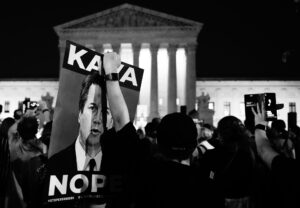

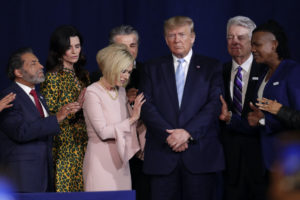
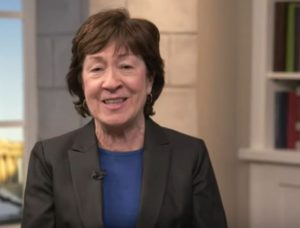

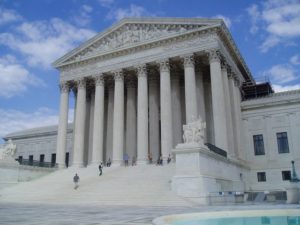
You need to be a supporter to comment.
There are currently no responses to this article.
Be the first to respond.